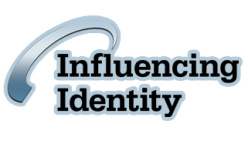Most of the products we offer require vector art to include your logo or custom graphic. But many people have never heard the term and don’t know what it means. A common misconception is that JPEG or PDF files can be vector files, but we’ll break it down so you can tell the difference.
JPEG vs. Vector
JPEG:
Most cameras save photos as JPEGs, but if you open a JPEG image and zoom in, you will see tiny squares of color called pixels. If you make the image bigger, the pixels get bigger until they are clearly visible to the naked eye. Images where the pixels are individually visible are referred to as pixelated.
Basic shapes and colors use these pixels, placed in a grid in thousands of different colors. The result when you zoom out is the complete image that you see. To make curves in your image, pixels on a grid create a jagged look.
Vector:
There is no grid of colored squares like in JPEGs. Instead, the online shapes making up the image are mathematically plotted by the computer program. Then, the program has been told what color (or colors) to fill that outline with. The image is very smooth and high quality. Vector artwork isn’t restricted to a grid to make curves in your image, so the curves are genuine and smooth.
Why do we require vector art?
The key here is the type of process being used to create the image. Laser engraving, hot stamping, and ribbon imprinting share a single fact: the process is 100% there or not there at all.
With laser engraving, for example, the laser burns the plastic or metal, removing the top layer in that spot to reveal a different-colored layer beneath. The laser has either burned, or it hasn’t; there are no half-burned areas.
Now, remember how those JPEGs are made up of squares of color? A curve on a black shape might appear smoother to our eyes by having some of the pixels towards the edges be shades of gray rather than full black. But the laser can’t do that. So those gray squares will be burnt just the same as the black, red, blue and all the other squares. And you end up with something that probably doesn’t look much like your logo.
But vector art can tell the laser exactly where the edges of your shape are so that the laser knows just how to get your image onto your product, filling in the outlines as it goes. The same is true for hot stamping and ribbon imprinting, which both use metal dies; either the color foil is stamped on in a spot or it is not.
How do you create vector art?
Two of the most popular programs are Adobe Illustrator and CorelDraw. Vector art files most commonly end in .eps or .ai, although there are some exceptions. We do have a few options for those customers who do not have vector artwork files of their graphics. And we also can take most images and create vector artwork for them for a small fee. (And you get to keep the file for future use!)
Information courtesy of Melanie Bunch, Graphic Artist. To learn more about name tags and our processes, review our Art Requirements.
